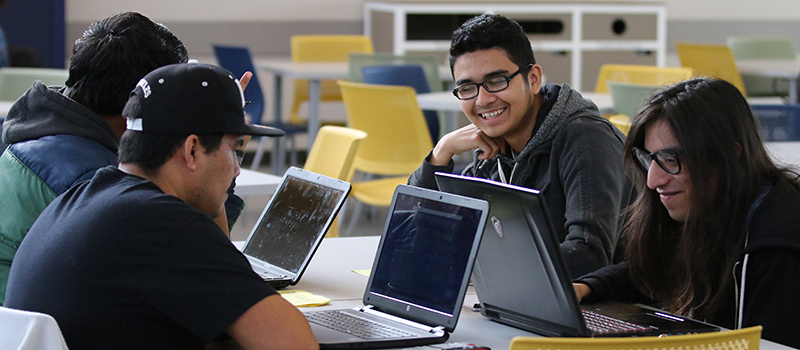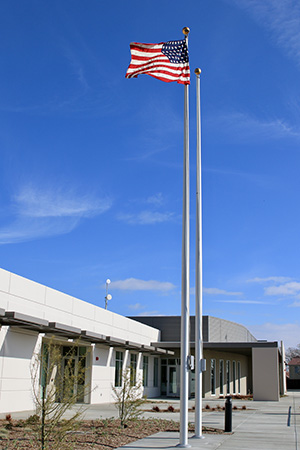
(Photo: WHCCD)
When COVID-19 forced California’s community colleges to switch to online learning—some adapted better than others.
One that fared well is West Hills Community College District (WHCCD) in California’s Central Valley. The district has campuses in Coalinga and Lemoore and a satellite center in Firebaugh. It serves 10,000 students spread out through a vast area of nearly 3,500 square miles in Fresno and Kings County.
For WHCCD Chancellor Stu Van Horn, the challenge was well known. Van Horn has been a fixture at the California Economic Summit for several years making the case that the broadband access is an important infrastructure issue for the future of California. Nothing that has happened in the last six weeks has changed his mind.
“So much of our district is broadband poor. We knew there would be hurdles when we were forced to shift to online,” Van Horn said. “But because we are so spread out, we’ve been using what technology we have very adeptly for many years. We knew how to rise to the challenge.”
Upon the decision to close the campuses and shift to 100% online, the district immediately surveyed students and found that many needed help—either technology hardware or access to broadband — via so-called “hot spots”— or, in many cases, both.
They had 75 laptops in inventory and immediately bought an additional 100 with free Microsoft Office and LinkedIn Learning already installed. In addition, the district provided 50 hot spots around the district and are looking for more.
“Those hot spots are hard to come by,” said Kelly Cooper, the vice chancellor of education and technology.
How was WHCCD able to make the switch to online so well—especially given the access to broadband issues that plague the area?
“Rural districts are naturally scrappy,” said Cooper. “We are used to fighting uphill battles, whether it’s trying to get our share of state funding or our distance from technology. These challenges aren’t new for us.”
 And the district’s faculty has already been working with its rosters, syllabi and attendance records online — so the transition could be fast, and as it turns out, effective.
And the district’s faculty has already been working with its rosters, syllabi and attendance records online — so the transition could be fast, and as it turns out, effective.
But the challenges for students and their families still exist and, in some ways, have intensified since the COVID-19 impacts have been felt.
“Half of our district does not have the necessary bandwidth for online learning,” she said. “For many of our students the only source of internet is a mobile phone and interactive learning necessary for success simply can’t be done effectively on a phone.”
Cooper and Van Horn pointed out something else: In addition to having adapt to online learning themselves, many of their students are also the teachers in their home when it comes to technology.
“So, it’s not unusual that one of our students has worked with a third grader on math and helped a fifth grader with a project before they even get to their own homework,” Cooper pointed out.
For career technical education (CTE) students, where hands-on experience is critical, the district is working to practice social distancing, while making sure that those in the heavy equipment, culinary, welding, truck-driving practicums can continue to gain real life experience in the semesters to come.
One challenge will be in health care where nursing practicums, as an example, often involve dozens of students at a time.
“We are working on that to reduce the number of people in a given area — be it an on-campus lab or a rotation at one of the area’s health care facilities,” Cooper added
Whatever will happen in September is still to be determined, but WHCCD is planning to have its campuses and labs open, assuming they have the option, given direction from Governor Newsom and California Community Colleges Chancellor Eloy Ortiz Oakley.
“We will practice social distancing and making sure our students’ safety is ensured,” said Van Horn. “But many of our students are already starting with the handicap of coming from poor backgrounds. We are committed to doing everything to ensure they can succeed and achieve the California dream, so we are hoping and planning for an on-campus presence this fall.”
Van Horn has been a leading voice for making sure that more broadband access is available to area like WHCCD serves. The COVID-19 public health emergency has shown that the state needs to move faster.
“While the percentage of our region without bandwidth shrinks, the need for more technology is moving even faster,” said Cooper.
“First we have to catch up,” said Van Horn. “Then we need to keep up. Whether it’s access to education, health care or other vital needs that technology can deliver, our region must have more accessible and affordable broadband.”

